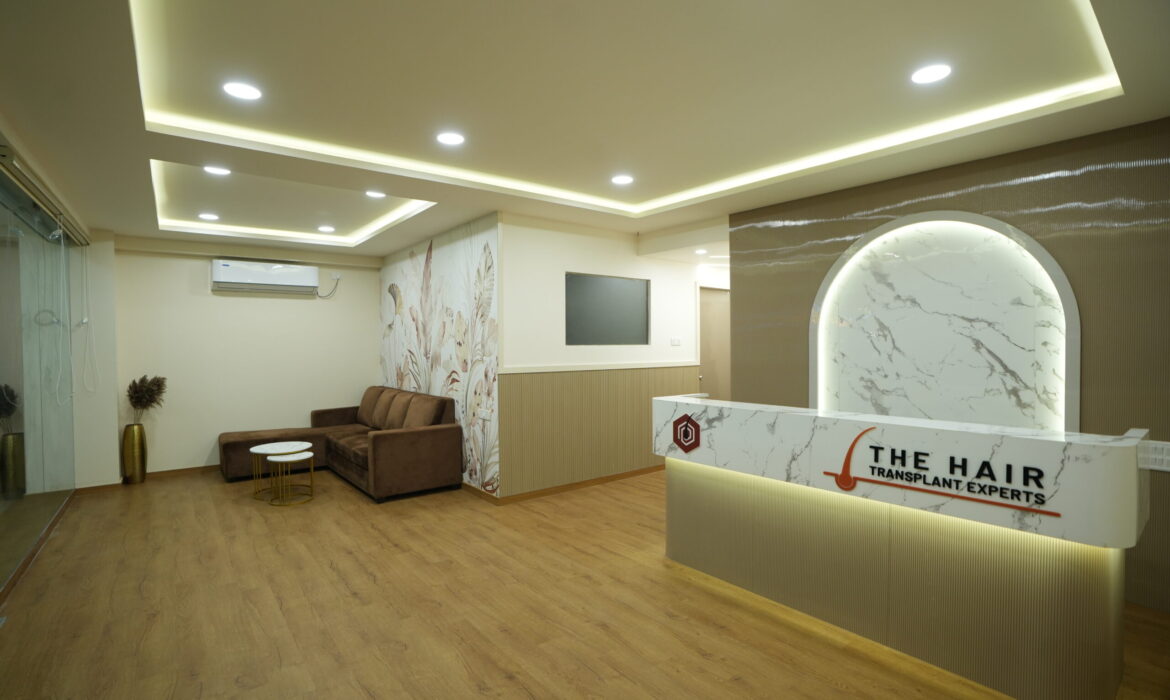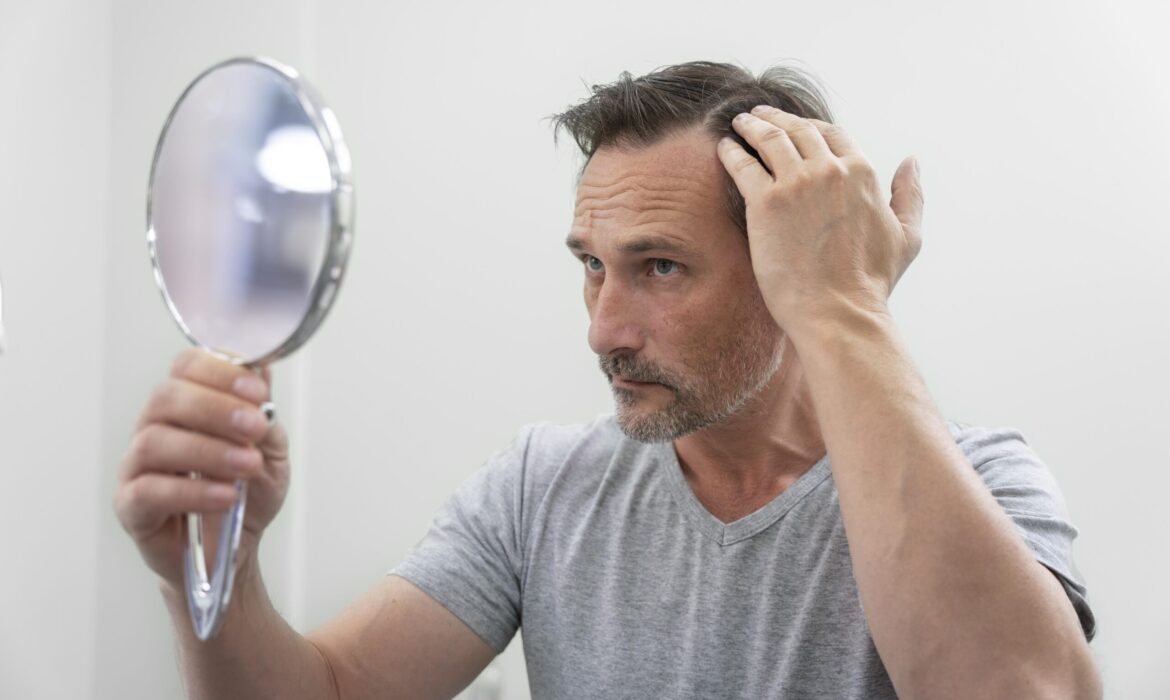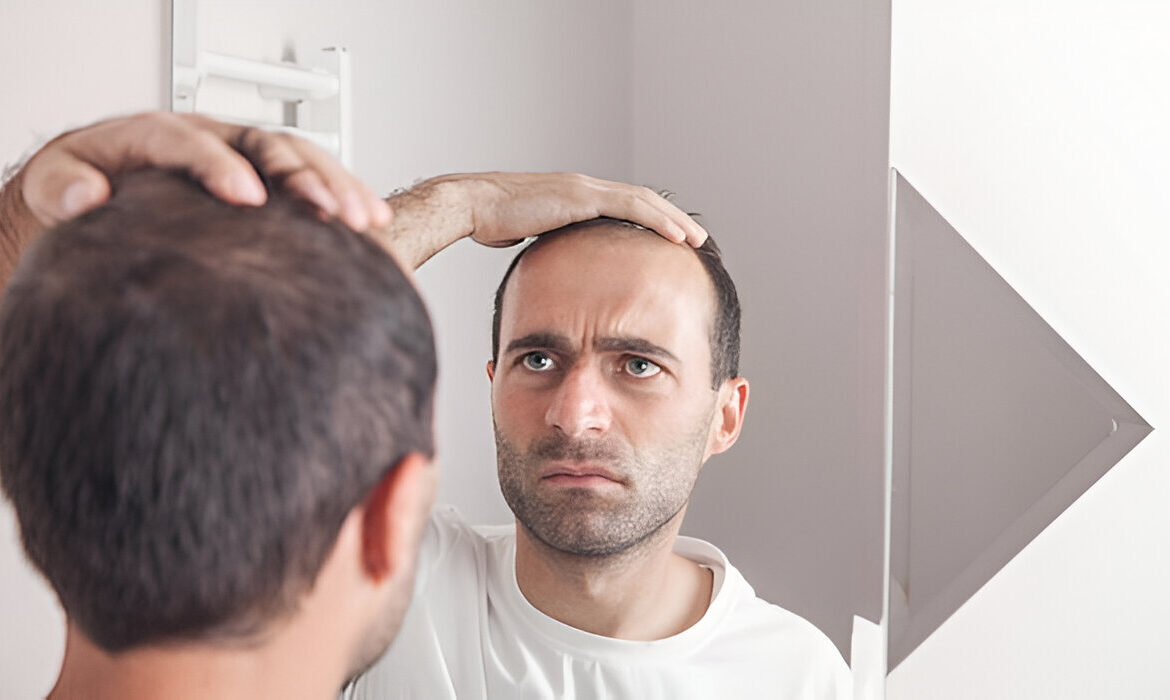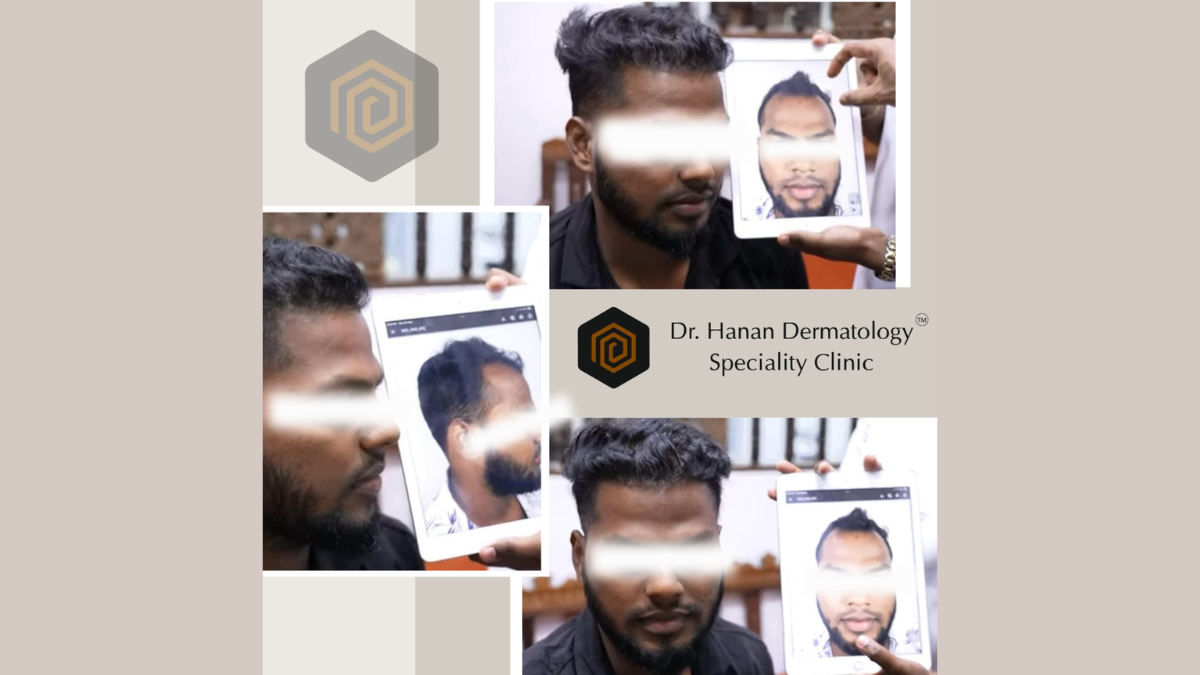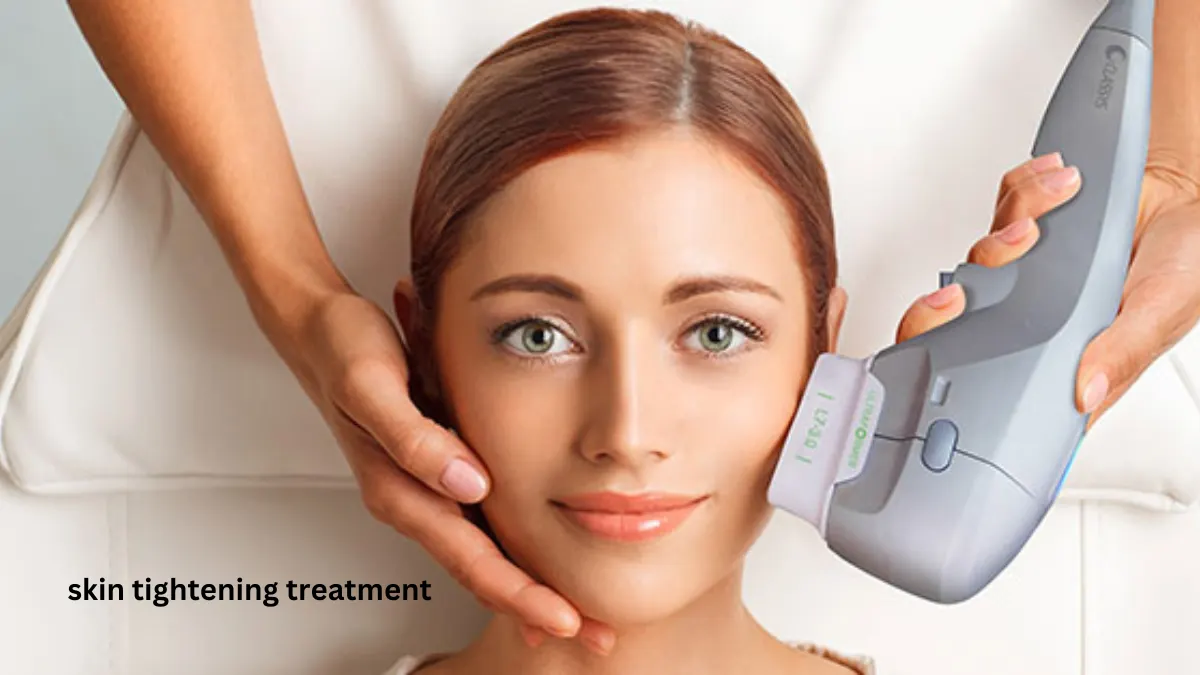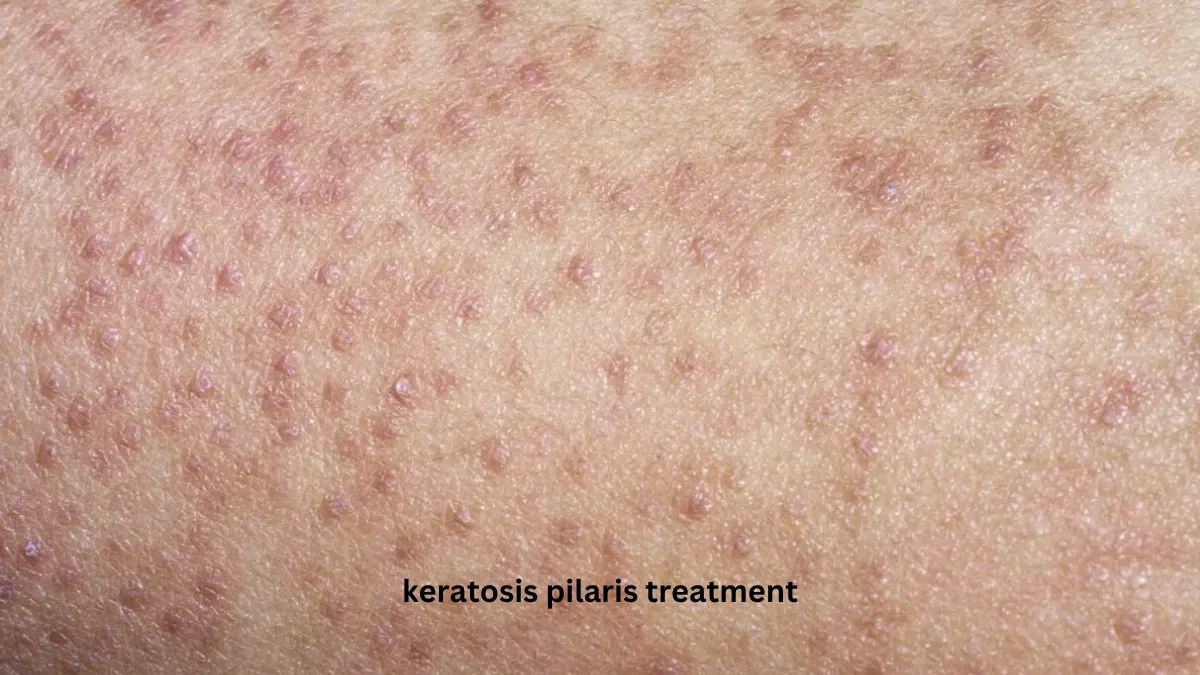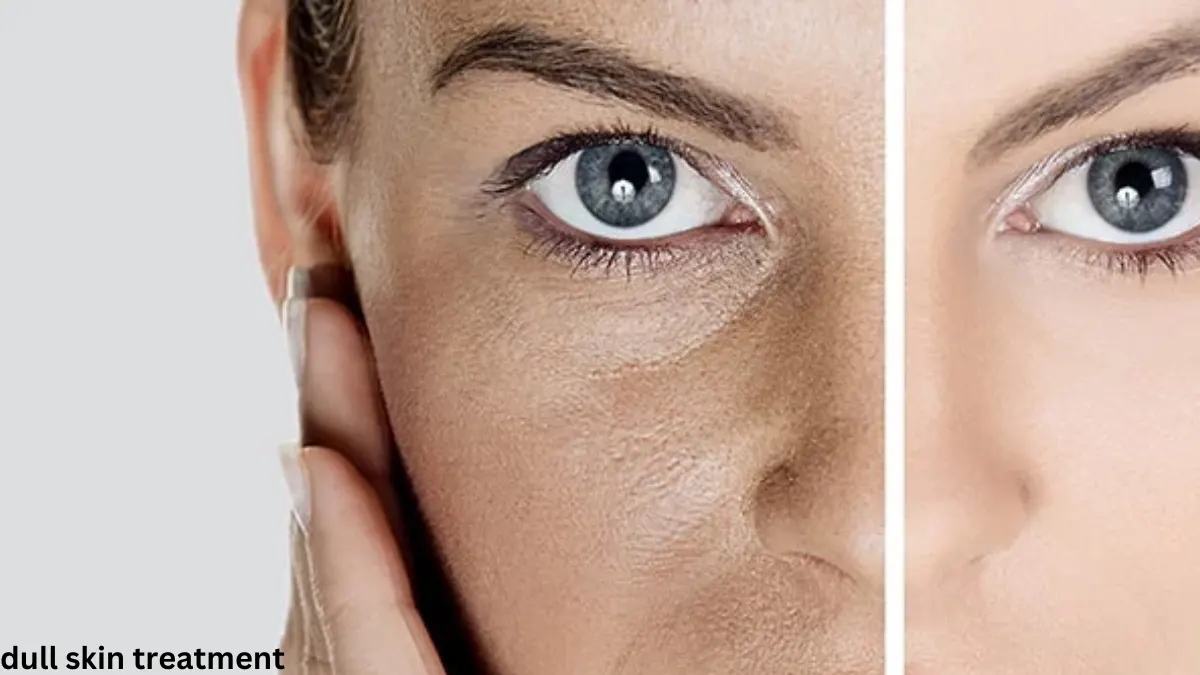Hair Transplant in Chennai
Hair Transplant in Chennai
Get the best hair transplant in Chennai at Dr. Hanan Clinic. Natural results with FUE, FUT & PRP. Book your free consultation today
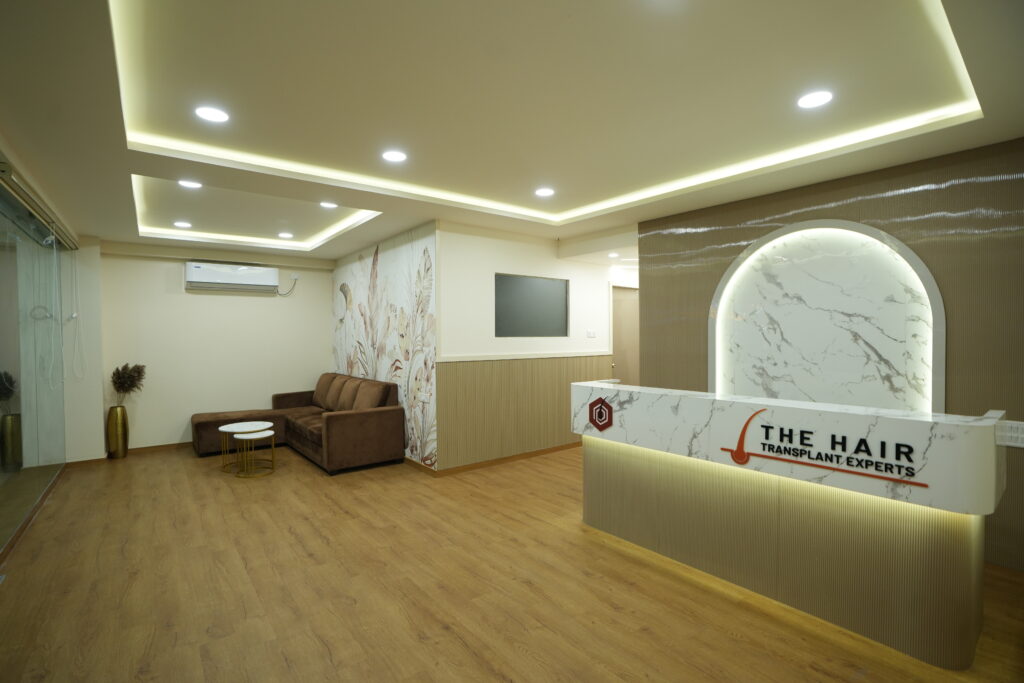
Are you struggling with hair loss and looking for a permanent solution in Chennai? There may be a hair transplant answer. In Dr. Hanan Dermatology Specialty and Trichology Clinic, we provide advance technology for hair restoration treatment that correspond to safe, effective and your unique hair goals.
Why Choose Hair Transplant in Chennai?
Hair loss can affect your confidence, presence and even your emotional good. Chennai, a medical hub in South India, is home to some of the best dermatology clinics, and Dr. Hanan’s clinic stands with its expertise, technology and personal approach.
Benefits of Hair Transplant:
Permanent solution
Natural looking results with your own hair follicle
Increases self -esteem and confidence
Minimum invasive procedure with quick recovery
About Dr. Hanan Dermatology Speciality and Trichology Clinic
Located in Padur, Chennai, Dr. Hanan’s clinic is a major destination for dermatology and hair care. With 801+ Google reviews and a rising reputation, the clinic hair transplant specializes in surgery, PRP therapy, dermatological treatment and beauty processes.
What makes us the best hair transplant clinic in Chennai?
Expert trichologist: led by experienced professionals with a passion for results.
Advanced Technology: We use the latest devices such as FUE (follicular unit extraction) for accurate and natural results.
Personal Consultation: We evaluate your scalp and suggest the most effective transplant Plan.
Safe and clean environment: Our clinic follows strict sterilization and safety protocols.
Transparent pricing: no hidden fee. Everything is clearly explained before the procedure.
Types of Hair Transplant Procedures We Offer
At Dr. Hanan Dermatology Speciality and Trichology Clinic, we provide a wide range of hair restoration techniques to suit every individual’s hair loss condition. Our treatments are scientifically backed, minimally invasive, and deliver long-lasting, natural results.
1. FUE – Follicular Unit Extraction
FUE is one of the most advanced and popular hair transplant methods. In this technique, individual hair follicles are extracted from the donor area (usually behind the skull) and transplanted into bald or hair thinning areas.
Benefits:
No stitches or visible scarring
Quick recovery
Ideal for both men and women
Natural-looking hairline
2. FUT – Follicular Unit Transplantation
Also known as the strip method, FUT involves removing a small strip of tissue from the donor area and dissecting it in individual follicular units for transplantation.
Benefits:
Cost-effective for large bald areas
Higher follicle survival rate
Recommended for patients with advanced hair loss
3. PRP – Platelet-Rich Plasma Therapy
PRP therapy is a non-surgical hair restoration method that involves injecting your own platelet-rich plasma in the scalp to encourage hair growth and improve hair thickness.
Benefits:
No surgery or downtime
Enhances results after hair transplant
Reduces hair fall
Boosts scalp health
4. Beard and Mustache Transplants
Dealing with uneven or sparse facial hair? Our advanced hair transplant techniques can restore a thicker, natural-looking beard and mustache.
Benefits:
Natural growth patterns
Improves density and symmetry
Suitable for scar coverage
5. Eyebrow Hair Transplant
For patients with thin or overplucked eyebrows, we offer eyebrow hair implants that restore the volume and shape using their own hair
Benefits:
Fuller, natural brows
Permanent solution
Artistic shaping to suit your face
6.Sapphire Pen Hair Transplant
This advanced method uses sapphire blades instead of metal ones to create recipient sites, reduce trauma and ensure rapid healing process.
Benefits:
Low tissue damage and minimum scars
Rapid recovery
High graft survival rate
More natural looking hair density
7. DHI – Direct Hair Implantation
DHI is a revolutionary hair transplant method that involves transplanting hair in the scalp directly without the need for incisions or channel creation.
Benefits:
High graft survival rate
No stitches or marks
Rapid recovery time
Accurate control over hair placement and direction
Real Results, Real Stories
Hundreds of patients in Chennai have trusted Dr. Hanan Dermatology Speciality and Trichology Clinic for their hair restoration journey. From receding hairlines to full coverage transformations, our before-and-after results speak volumes.

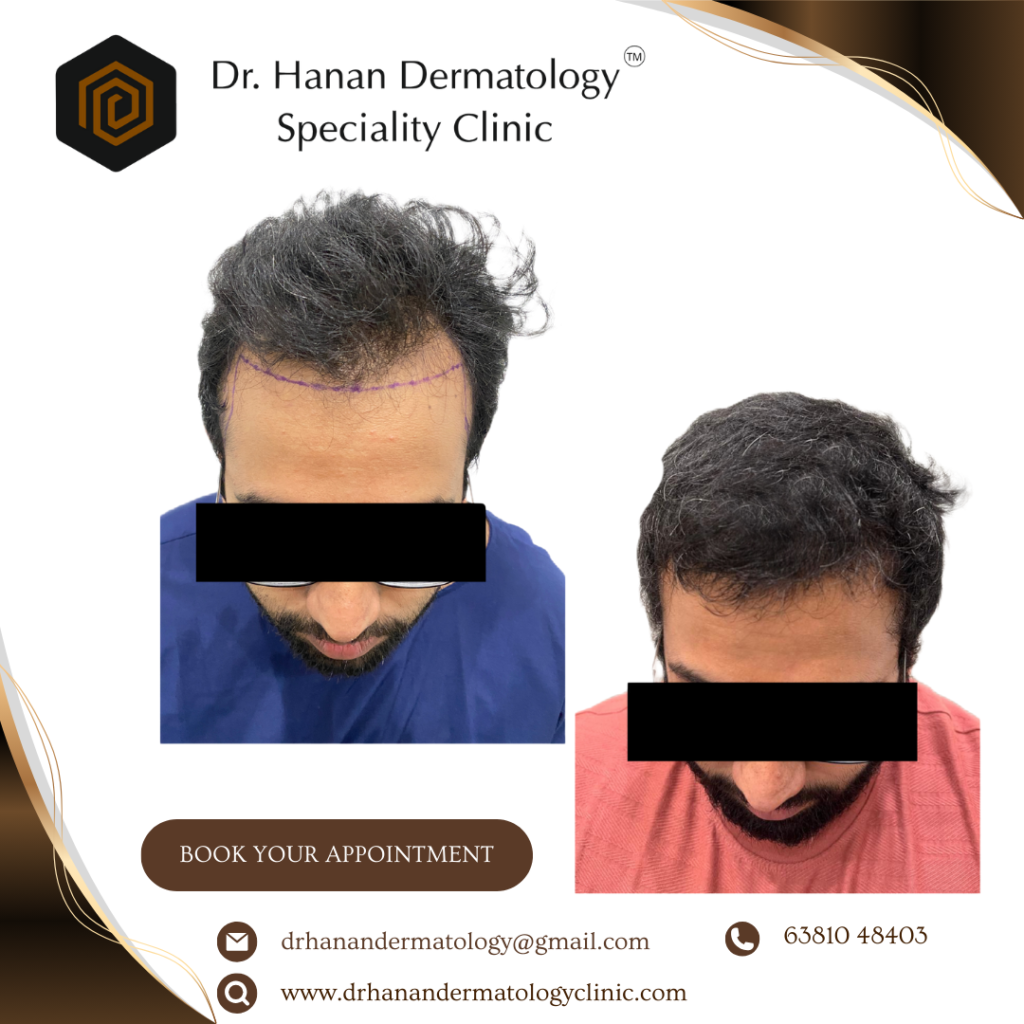



What to Expect – Your Hair Transplant Journey
Initial Consultation
Our experts analyze your scalp and medical history to make a customized plan.
Procedure Day
You will undergo a painless, outpatient surgery using advanced equipment.
Recovery Phase
Quick recovery with minimal downtime. Our team offers guidance after fully care.
Hair Growth Timeline
Visual results begin in 3-4 months. Full hair growth is seen within 9–12 months.
Book Your Consultation Today!
Conclusion:
Hair transplant is no longer a luxury – this is necessary to deal with hair loss. Expert care, personal solutions, and with advanced techniques, Dr. in Chennai. Hanan Dermatology Specialty and Trichology Clinic is your place for reliable, natural looking hair restoration.
Table of Contents
Summer Skin Care Routine for All Skin Types
Summer Skin Care Routine for All Skin Types
Follow the best summer skin care routine for all skin types to stay glowing, fresh, and protected all season long.
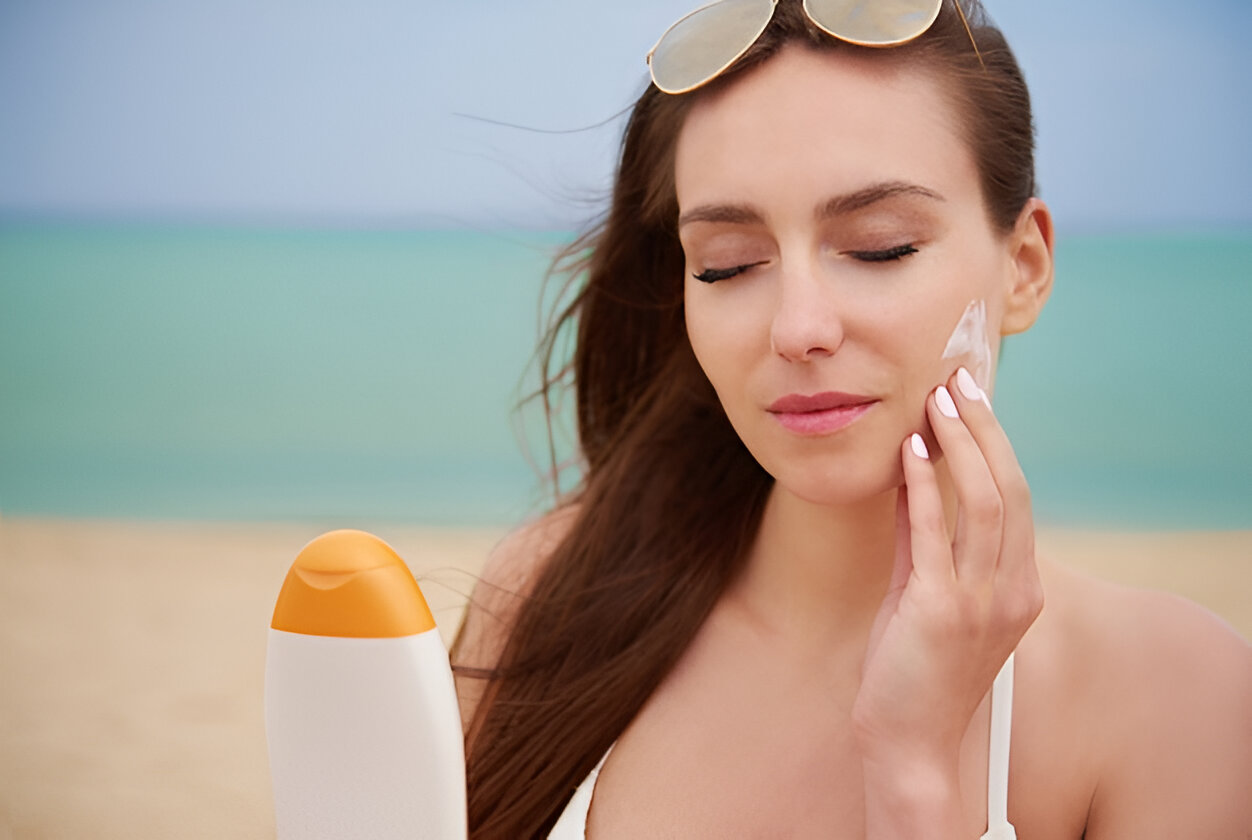
Summer is the season of sunshine, beach trips and vibrant energy – but it can also be harsh on your skin. With an increase in contact with UV rays, heat, sweat and pollution, your skin needs additional attention during these warm months. Whether you have oily, dry, sensitive, or combination skin, a tailored skin care routine for summer can help you maintain a healthy, glowing skin.
In this blog, we break the routine of the right summer skin care routine for all types of skin, packed with dermatologist-approved tips to defeat heat and prevent breakouts, pigmentation and dullness.
Why Is Summer Skin Care Important?
The intense heat and humidity in summer can lead to:
1. Excess sebum (oil) production
2. Clogged pores and acne
3. Sunburn and tanning
4. Dehydration and dullness
5. Uneven skin tone and pigmentation
Adopting the right summer skin care routine helps protect your skin barrier, keeps you hydrated, and boosts your natural glow while preventing long-term sun damage.
Summer Skin Care Routine for Oily Skin
Oily skin can be greasier in summer, causing frequent breakouts. Here is how to manage it:
1. Use a sulfate-free, oil-control cleanser twice a soft foaming cleanser day.
2. Choose oil free moisturizer-pelted, gel-based moisturizer, Ingredients such as hyaluronic acid and niacinamide.
3. non-comedogenic sunscreen: Use a matte-finish SPF 50 sunscreen to prevent oil build-up and tanning.
4. Blotting papers and clay masks – Use once a week to absorb excess oil and detoxify pores.
Pro Tip: Avoid over-washing your face. It can trigger more oil production!
Summer Skin Care Routine for Dry Skin
Dry skin gets dehydrated even faster in summer. Stay supple with this regimen:
1. Cream-Based Cleanser – Avoid foaming cleansers that strip your skin of natural oils.
2. Hydrating Toner – Look for rose water or glycerin-based toners to prep your skin.
3. Deep Moisturizer – Choose moisturizers with ceramides, shea butter, or squalene.
4. SPF with Moisturizing Base – Go for sunscreen that doubles as a moisturizer.
Pro Tip: Use a humidifier at night to keep your skin moist while you sleep.
Summer Skin Care Routine for Sensitive Skin
Sensitive skin requires a gentle, minimalistic approach during summer:
1. Fragrance-Free Cleanser – Use hypoallergenic products that won’t trigger irritation.
2. Aloe Vera Gel or Thermal Water Spray – Instantly soothes inflammation or redness.
3. Minimal Ingredients Moisturizer – Avoid alcohol and synthetic additives.
4. Mineral Sunscreen (Zinc Oxide) – Offers broad-spectrum UV protection without irritation.
Pro Tip: Always do a patch test before trying any new product.
Summer Skin Care Routine for Combination Skin
Combination skin can be tricky—oily in the T-zone and dry elsewhere. Here’s how to balance it:
1. Balancing Cleanser – Use a gentle foaming cleanser to target oily areas.
2. Dual Moisturizers – Apply gel-based moisturizers to the T-zone and creamier ones to dry areas.
4. Lightweight Sunscreen – Choose a water-based, non-greasy SPF 30+.
5. Weekly Exfoliation – Use a mild AHA or BHA exfoliant to unclog pores and even out texture.
Pro Tip: Multimasking (using different masks on different areas) works wonders.
Extra Tips for Glowing Skin All Summer Long
1. Drink at least 2.5–3 liters of water daily
2. Eat seasonal fruits like watermelon, berries, and cucumber
3. Avoid heavy makeup—opt for a tinted sunscreen or BB cream
4. Don’t forget your lips and under-eye area—use SPF lip balm and hydrating eye cream
5. Reapply sunscreen every 2–3 hours if you’re outdoors
Professional Help for Summer Skin Concerns
If you are struggling with acne, sunspot, or pigmentation, do not ignore it. At Dr. Hanan Dermatology Specialty and Trichology Clinic, our experts provide personal summer skin care treatment:
1. Hydrafacials for hydration and deep cleansing
2. Chemical peels to remove tan and dead skin cells
3. Laser treatments for pigmentation and dullness
4. Custom summer skin care plans for all skin types
Conclusion:
A proper skin care routine for summer is the best protection of your skin against heat, pollution and sun. By following the above tips based on your skin type and making healthy lifestyle changes, you can keep your skin fresh, bright and problem-free in summer.
For personal advice and advanced treatments. Book a consultation at Dr. Hanan Dermatology Specialty and Trichology Clinic, your reliable destination for all-season skin care.
Table of Contents
Sex After Hair Transplant: Does It Affect Your Results?
Sex After Hair Transplant: Does It Affect Your Results?
Sex after a hair transplant—does it affect results? Learn when it’s safe and what to avoid from the best hair transplant clinic in Chennai.
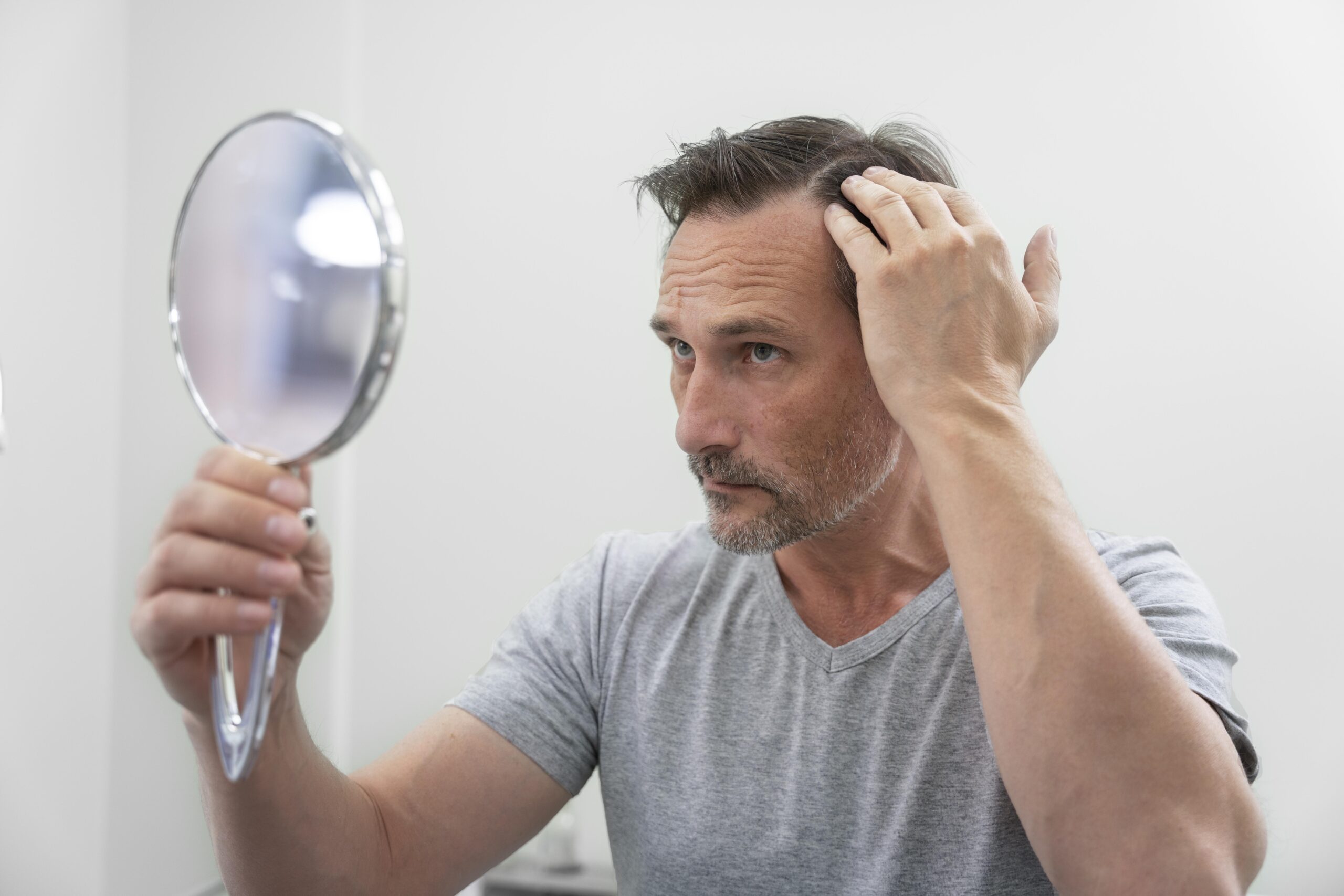
A hair transplant is a life -changing process that restores not only hair but also confidence. However, patients often worry about after surgery care, and a common question is: “Can I have sex after a hair transplant?”
While sex is a natural part of life, attachment to it even after a hair transplant can affect the healing process. In this blog, we will discuss how sexual activity can affect your results, when it is safe to resume, and the precautions you should take.
Can You Have Sex After a Hair Transplant?
The brief answer is: It is best to wait for at least 7-10 days.
After a hair transplant, new transplanted hair follicle is delicate. During this treatment period, excessive sweating, increase in heart rate, and can interfere with the physical pressure recovery process on the scalp.
While sex does not directly damage transplanted grafts, some factors related to sexual activity may cause risk
How Does Sex Affect Hair Transplant Recovery?
1. Sweating may increase the risk of infection
Those who have lost hair due to burns, accidents or surgery can qualify for a transplantation, based on their scalp position and the availability of donor hair.
2. Increased blood pressure may cause inflammation
Sexual activity increases blood pressure and heart rate, causing inflammation after surgery on the scalp and forehead. This can expand the time of recovery and cause discomfort.
3. Risk of accidental trauma for scalp
During sex, sudden movements or casual bumps can dislike grafts in the initial treatment phase. Even slight friction can disturb new transplanted follicles.
4. hormonal changes and treatment
Sex triggers the release of hormones such as testosterone and adrenaline. Although this is not necessarily harmful, it can cause temporary changes in the body’s response to treatment, which can lead to comfort in the first few days.
When Can You Resume Sex After a Hair Transplant?
Doctors usually recommend waiting at least 7-10 days before being engaged in sexual activity. However, it depends on individual treatment rates.
Here is a common guideline:
Day 1-5: Avoid sex strictly. Grafts are still critical.
Day 6-10: If healing is well, soft physical activity can be resumed. However, avoid sweating and avoid direct exposure to the skull.
After 10 days: Most patients, including sex, can resume general activities without major concerns.
For the best results, always consult your hair transplant surgeon before starting intensive activities.
Tips for sex after hair transplant
If you decide to resume sexual activity after the recommended waiting period, follow these precautions:
- Avoid excessive sweating: Keep the room cool and avoid long -term sessions.
2. Be conscious of head movements: Avoid posts that put pressure on your scalp.
3. Do not touch or scratch your scalp: Graft may cause damage to casual rubbing.
4. Stay hydrated: Drinking water helps in recovering rapidly.
5. Keep your head high: It reduces inflammation and prevents fluid buildup.
Conclusion:
Sex hair does not ruin your hair transplant, but timing matters. If you follow proper precautions then sex does not affect your results after hair transplant. The key is to allow your scalp to be heal without unnecessary stress.
At Dr. Hanan Dermatology Specialty and Trichology Clinic, we provide specialist guidance to ensure the best post-transplant care. If you worry about recovery, then our experts are here to help!
Book a consultation today and get the best hair transplant in Chennai!
Ready for Permanent Hair Restoration?
Table of Contents
How to Know, Are You the Good Candidate for Hair Transplantation?
How to Know, Are You the Good Candidate for Hair Transplantation?
Are you the good candidate for hair transplantation? Learn about hair loss types, eligibility, and factors to consider about hair transplant
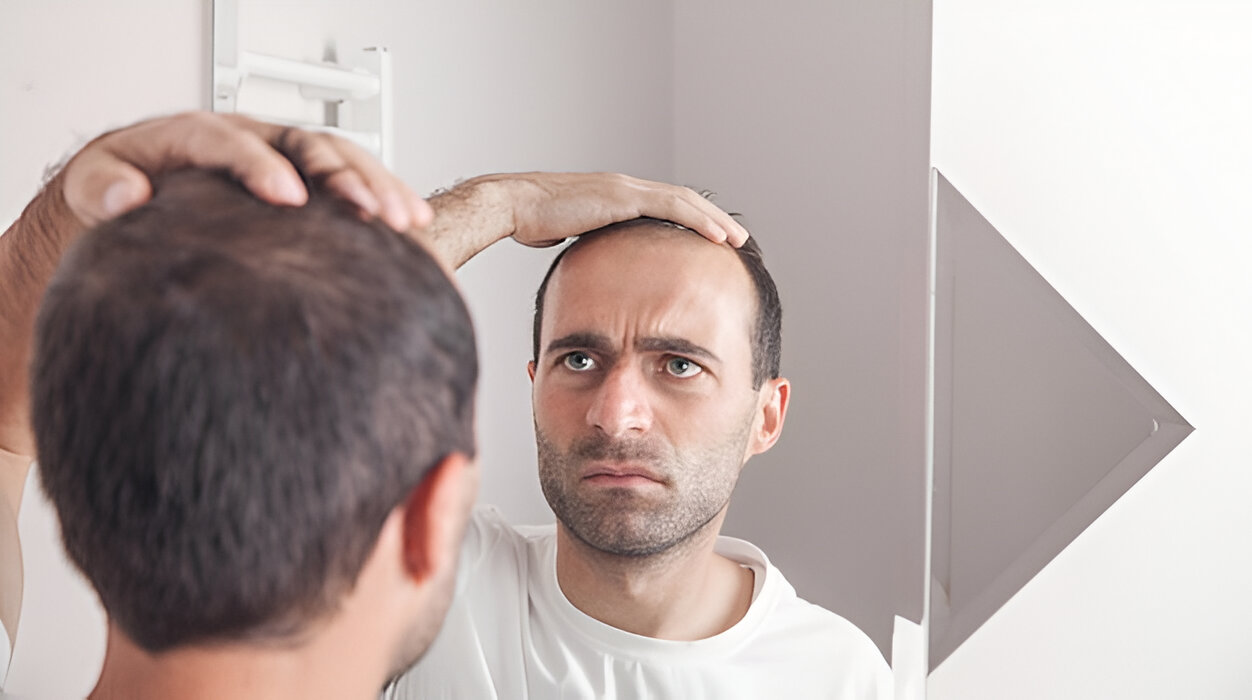
Hair transplant is a popular and effective solution for hair loss, but not everyone is an ideal candidate for the process. Understanding whether you are a suitable candidate can help you determine realistic expectations and achieve the best results. In this blog, we will discuss major factors that determine whether you are eligible for a hair transplant, including a variety of hair loss and other factors.
Who is a Good Candidate for Hair Transplantation?
A good candidate for hair transplantation usually fulfills the following criteria:
- Enough donor hair: The availability of healthy hair follicles is usually important for a successful transplant, from the back of the scalp or from the back.
- Stable hair loss: hair loss should have been stabilized, as passing through a transplant can cause more balding over time.
- Good overall health: Candidates should not have medical conditions that can interfere with treatment or hair growth.
- Realistic expectations: It is necessary to understand the results and restrictions of a Hair transplantation.
- Scalp conditions: A healthy scalp free from infection, inflammation, or other conditions is ideal for a successful process.
Types of Hair Loss and Suitability for Hair Transplant
Male and female pattern hair loss (Androgenetic alopecia)
It is the most common type of hair loss and is caused by genetics and hormonal changes. It affects both men and women differently:
Male: A receding hairline and are characterized by being thin on the crown.
Women: Usually a result of being overall thinner without a receding hairline.
Individuals who are facing stable hair loss are usually good candidates for a hair transplant, provided they have enough donor hair.
Diffuse Unpatterned hair loss (Dupa)
Unlike pattern hair loss, DUPA is characterized by wider thinning across the scalp, including the donor area. Since there is no stable donor area, people with Dupa cannot be good candidates for hair transplant.
Hair Loss Due to Trauma or Scarring
Those who have lost hair due to burns, accidents or surgery can qualify for a transplantation, based on their scalp position and the availability of donor hair.
Alopecia Areta and autoimmune hair loss
Conditions such as the alopecia Ata cause patchy hair loss due to an autoimmune reaction. Since the immune system attacks the hair follicles, hair transplant is not usually recommended for such situations.
Additional Factors That Influence Eligibility
Age Consideration
While there is no specific age limit for hair transplant, young patients (below 25) are advised that their hair loss pattern is stabilized. Passing through a transplant can quickly lead to an unnatural appearance as hair fall continues.
Hair type and texture
The texture, thickness and color of your hair affect the final appearance of implants. Excessive thick hair often provides better coverage than thin hair.
Scalp Laxity
Scalp laxity refers to looseness of the scalp. People with a flexible scalp have a high success rate for FUT (follicular unit transplantation) procedures, as more grafts can be extracted.
Lifestyle
Unhealthy habits such as smoking, poor diet and excessive alcohol consumption can negatively affect the results of hair transplant. Candidates committed to a healthy lifestyle will have a better success chance.
Consult with a hair transplant specialist
If you are considering a hair transplant, it is crucial to consult a qualified dermatologist. A professional assessment will help determine your character and provide you with a personal treatment plan.
Consultation:
Everyone who experiences hair loss is a good candidate for hair transplant. Factors such as hair loss types, donor hair availability, overall health and lifestyle options play an important role in determining the eligibility. If you are uncertain whether you are a good candidate, then the best hair transplant clinic in Chennai for expert guidance and personal treatment options. Consult with Dr. Hanan Dermatology Specialty and Trichology Clinic.
Ready for Permanent Hair Restoration?
Table of Contents
Is a Hair Transplant Permanent and for How Long?
Is a Hair Transplant Permanent and for How Long?
Is a hair transplant permanent? Understand how long results last, what affects longevity, and how to care for your transplanted hair for the best outcome.
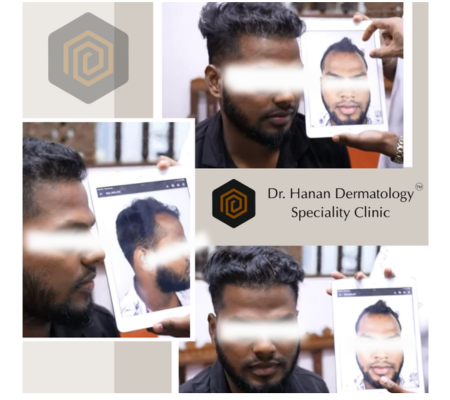
Let’s be honest, if you think of Hair Transplant what’s the first question that comes to your mind? Most people have this question in mind: “Is Hair Transplant permanent?” The answer is absolutely yes!
A hair transplant is designed as a long-term solution for hair loss, using its own natural hair to restore bald or thin areas. The transplanted hair follicle is taken from the donor area – usually the back or sides of your scalp – where hair is resistant to genetically balding. Once these follicles are transplanted into bald spots, they settle, heal, and grow like their natural hair.
What about the healing time? After the procedure, the healing process usually takes about 7 to 10 days, during which there may be minor crusty patches of skin and redness. Within a few weeks, implanted hair can shed – a completely common phase called shock loss – but don’t worry! It makes way for the growth of strong, healthy hair in the next months. From 3 to 6 months, you will start seeing visible regrowth, and in 12 to 18 months, you will enjoy the full, natural looking head of hair.
Two permanent hair transplant techniques used for hair restoration:
1. Follicular Unit Extraction (FUE)
In this method, hair follicles are removed one by one from the donor area using a special tool. These small grafts are then carefully placed in bald spots. Since no major cuts are made, the medical process is fast, and there are no marks. Transplanted hair will grow naturally for a lifetime, giving it a permanent solution to hair loss.
2. Follicular Unit Transplantation (FUT)
This technique involves removing a small strip of skin from the back of the scalp. The strip is then divided into individual hair follicles, which are transplanted into bald areas. Since hair comes from genetically strong areas, it remains permanent and grows like natural hair.
Is a Hair Transplant Permanent?
The simple answer is yes – a hair transplant is a permanent solution to hair loss. The reason for this is that the implanted hair is taken from areas of the scalp which are naturally resistant to balding, which are known as DHT-resistant areas (usually the back of the head and sides). These hair follicles maintain its resistance even after it is transferred to the bald spot, ensuring long – term hair growth.
Factors that ensure long -term success
While a hair transplant is designed to be permanent, many factors contribute to achieving the best and longest lasting results:
A Skilled Surgeon – The proper positioning of hair follicles ensures natural looking results and maximum grafts existence.
Healthy Donor Area – A strong and adequate supply of hair in the donor area affects long -term hair growth.
Proper Aftercare – Following post-transplant instructions, avoiding excessive sunlight, and taking prescribed medications helps maintain results.
Overall Health & Lifestyle – A balanced diet, stress management, and avoiding smoking contribute to hair longevity.
What is expected after the process?
After a hair transplant, the healing and growth process takes place in stages:
Week 1-2: Light redness and scabbing in the transplanted area, which recover in about 7-10 days.
Week 3-6: There is a temporary phase called shock loss, where implanted hair shed-this is completely normal.
Month 3-6: New hair starts growing, and the scalp looks full.
Month 6-12: Hair naturally thickened and continues to mix with existing hair.
12-18 months: Full results appear, with permanent, natural hair growth.
A successful hair transplant does not mean many bald spots, and the results last throughout your lifetime-you get thick, natural looking hair that grows like the rest of the hair of your scalp.
How to Maintain Your Hair Transplant Results for the Long Term:
A hair transplant is a permanent solution, but requires proper care to maintain healthy, long -lasting results. Like natural hair, Transplanted hair requires proper nutrition, scalp care and professional follow -up to stay strong and healthy
Essential Tips for Long-Term Hair Transplant Care
1. Follow a soft hair care routine
- Use a light, sulfate-free shampoo to keep the scalp clean and prevent irritation.
Especially in the early months, avoid scraping or scratching the scalp
You should avoid using rigid chemical remedies such as hair dye, bleaching, or permit for at least 6 months after the procedure.
2. Keep a healthy diet
- Eat a protein – rich diet (eggs, fish, nuts, dairy) to strengthen hair.
- For healthy hair growth, consume vitamins and minerals like biotin, zinc and iron.
- Stay hydrated and reduce additional caffeine and processed foods.
3. Avoid smoking and alcohol
- Smoking reduces hair follicles, which slows growth.
- Excessive alcohol intake can affect the absorption of nutrients, weakening hair.
4. Protect your skull from sunlight
- Wear a hat or use sunscreen on your scalp to protect it from UV damage.
- Avoid exposure to the sun directly for a long time, especially in the first few months.
5. Regular follow – up schedule with a dermatologist
- A professional check-up helps track progress and detect any issue.
- If necessary, your doctor may recommend scalp treatment or medicines.
Role of PRP Therapy and other assistant treatments
PRP (platelet-rich plasma) therapy
PRP therapy is an effective post-transplant treatment that increases hair growth by stimulating hair follicles. This involves drawing a small amount of your blood, processing it to extract growth factors and injecting it into the scalp.
- Strengthens existing and implanted hair
- Gave speed to Healing and Regrowth
- increases hair density and thickness
Other Assistant Treatment
- Minoxidil (topical solution): Helps to encourage growth and maintain results.
- Finasteride (oral medicine): In some cases reduces the hair thinning.
- Scalp massaging: Improve blood circulation and nourish hair follicles.
When to consult a doctor
If you are noticing hair thinning or baldness and considering a hair transplant, the first step you have to do is consult a doctor. A professional assessment helps determine the reason for your hair loss – whether it is genetic, hormonal, or due to lifestyle factors – and whether a transplant is the perfect solution.
Doctors will examine your scalp, They check the healthy donors hair availability, and discuss alternative treatments if necessary.
A doctor consultation also gives you a clear understanding of the procedure, expected results and recovery process. If you have any medical conditions or have medicines that can affect therapy, your doctor will guide you on the required precautions. A quick talk to an expert ensures that you make an informed decision and get the best long – term results for natural hair restoration.
Conclusion:
A hair transplant is a permanent solution to restore natural hair, but success depends on the proper plan, expert execution and aftercare. Understanding the process, treatment process and long -term maintenance ensures the best results, which requires a specialist consultation.
At Dr.Hanan Dermatology Specialty Clinic & Hair Transplant Center, we provide specialist consultation to assess your hair loss and recommend the best treatment for you. Whether you are considering a hair transplant or needs guidance on hair restoration options, our team is here to help.
Book your consultation today and take the first step towards achieving your confidence with a full, and natural looking head of hair.
Ready for Permanent Hair Restoration?
Table of Contents
Ultimate Guide to Skin Tightening Treatments: Types, Benefits, and Aftercare
As we age, our skin loses elasticity due to decreased collagen and elastin production. This results in sagging skin, fine lines, and wrinkles. Thankfully, modern skin tightening treatments can help restore firmness and rejuvenate the skin without surgery. This article explores different skin tightening treatments, their benefits, and essential aftercare tips.
Book Your Consultation Today
Visit Dr. Hanan Dermatology Specialty Clinic in Padur, OMR, Chennai. Schedule your consultation today and start your journey to fuller, healthier hair.
For more information and to book your appointment, visit our clinic or call us at the clinic’s contact details.
How Skin Tightening Treatments Work
Skin tightening treatments stimulate collagen and elastin production using various technologies such as heat, ultrasound, and microneedling. These treatments improve skin texture, elasticity, and firmness, giving a more youthful appearance.
Types of Skin Tightening Treatments
1. Laser Skin Tightening
Laser treatments use targeted light energy to penetrate deep into the skin, stimulating collagen production. This method is particularly effective for tightening skin on the face, belly, and upper arms.
2. Radiofrequency (RF) Skin Tightening
RF treatments use radiofrequency energy to heat the skin’s deeper layers, triggering collagen and elastin production. Popular RF treatments include:
- Thermage®: Ideal for facial and body contouring.
- Morpheus8®: Combines RF with microneedling for deeper skin remodeling.
- Exilis®: A non-invasive treatment for tightening loose skin and reducing fat.
3. Microneedling
This treatment involves tiny needles that create micro-injuries, stimulating the skin’s natural healing process and boosting collagen production. It is often combined with RF for enhanced results.
4. Ultherapy (Ultrasound Therapy)
Ultherapy uses ultrasound waves to penetrate deep into the skin and stimulate collagen production. It is commonly used as a non-surgical alternative to facelifts.
5. High-Intensity Focused Ultrasound (HIFU)
HIFU uses focused ultrasonic energy to promote collagen production. It is a popular treatment for non-invasive skin lifting and tightening.
Benefits of Skin Tightening Treatments
- Improved skin elasticity and firmness
- Reduction of fine lines and wrinkles
- Non-invasive with minimal downtime
- Natural-looking and long-lasting results
Potential Side Effects and Risks
While skin tightening treatments are generally safe, some individuals may experience:
- Temporary redness, swelling, or mild discomfort
- Rare side effects such as burns, pigmentation changes, or scarring Choosing a qualified and experienced practitioner minimizes these risks.
Aftercare Tips for Best Results
To ensure optimal results and smooth recovery, follow these aftercare tips:
- Stay hydrated: Drink plenty of water before and after treatment.
- Avoid alcohol: Refrain from consuming alcohol for 24-72 hours post-treatment.
- Skip hot showers: Avoid hot showers or baths for at least 24 hours.
- Use gentle skincare: Avoid harsh ingredients like retinol and acids until your skin heals.
- Wear sunscreen: Protect treated areas from sun exposure to maintain results.
Who is a Good Candidate for Skin Tightening?
Skin tightening treatments are suitable for individuals experiencing mild to moderate skin laxity. Ideal candidates include:
- People in their 30s to 60s with sagging skin
- Those looking for non-surgical anti-aging solutions
- Individuals in good overall health Pregnant women and individuals with certain medical conditions should consult a dermatologist before undergoing treatment.
Cost of Skin Tightening Treatments
The cost of skin tightening treatments varies based on the type of procedure, clinic location, and number of sessions required. Approximate price ranges:
- Laser Skin Tightening: ₹50,000 – ₹2,00,000 per session
- RF Skin Tightening: ₹40,000 – ₹1,50,000 per session
- Microneedling: ₹30,000 – ₹1,00,000 per session
- Ultherapy/HIFU: ₹80,000 – ₹2,50,000 per session
Comparing Skin Tightening Treatments: Which One is Best for You?
| Treatment | Technology | Best For | Downtime |
|---|---|---|---|
| Laser | Light energy | Face, arms, belly | Minimal |
| RF | Radiofrequency waves | Face, body contouring | Minimal |
| Microneedling | Needles creating micro-injuries | Fine lines, texture improvement | 1-3 days |
| Ultherapy | Ultrasound waves | Non-surgical facelift | None |
| HIFU | High-intensity ultrasound | Deep skin tightening | None |
Choosing the right treatment depends on your skin type, concerns, and desired results. A consultation with a skincare professional can help determine the best option for you.
Conclusion
Skin tightening treatments offer a non-invasive way to restore youthful, firm skin by stimulating collagen production. With various options available, from laser and RF to microneedling and ultrasound therapies, you can find a treatment that suits your needs. Ensure proper aftercare and consult a professional for the best results.
Ready to rejuvenate your skin? Schedule a consultation with a dermatologist today!
Shedding Phase After Hair Transplant: What to Expect & How to Care for Your Scalp
Undergoing a hair transplant is an exciting step toward hair restoration, but many individuals experience the shedding phase shortly after the procedure. This stage, also known as shock loss, is a natural and temporary process. Understanding the shedding phase can help manage expectations and ensure proper scalp care for optimal regrowth.
Book Your Consultation Today
Visit Dr. Hanan Dermatology Specialty Clinic in Padur, OMR, Chennai. Schedule your consultation today and start your journey to fuller, healthier hair.
For more information and to book your appointment, visit our clinic or call us at the clinic’s contact details.
What is the Shedding Phase?
The shedding phase is a temporary period where transplanted hair falls out before new growth begins. This happens because the hair follicles enter the resting phase of the hair growth cycle after being relocated. While shedding may seem concerning, it is a normal and necessary part of the hair restoration journey.
When Does Shedding Occur?
- Shedding typically begins 2–4 weeks after a hair transplant.
- The phase can last for 2–3 months, depending on individual healing factors.
- You may first notice a few hairs falling out, which gradually becomes more noticeable.
Why Does Shedding Happen?
The hair growth cycle consists of three main phases:
- Anagen (Growth Phase): Active hair growth stage.
- Catagen (Transition Phase): Hair stops growing and prepares to shed.
- Telogen (Resting Phase): Hair falls out before new hair grows.
After a transplant, hair follicles enter the telogen phase due to temporary trauma, leading to shedding. However, the follicles remain intact and will soon produce new hair.
What Happens After Shedding?
- 4–12 Months: New hair begins to grow back.
- 12–18 Months: Hair becomes thicker and blends with existing hair.
- The final results depend on individual hair growth rates and adherence to post-transplant care.
How to Care for the Scalp During Shedding
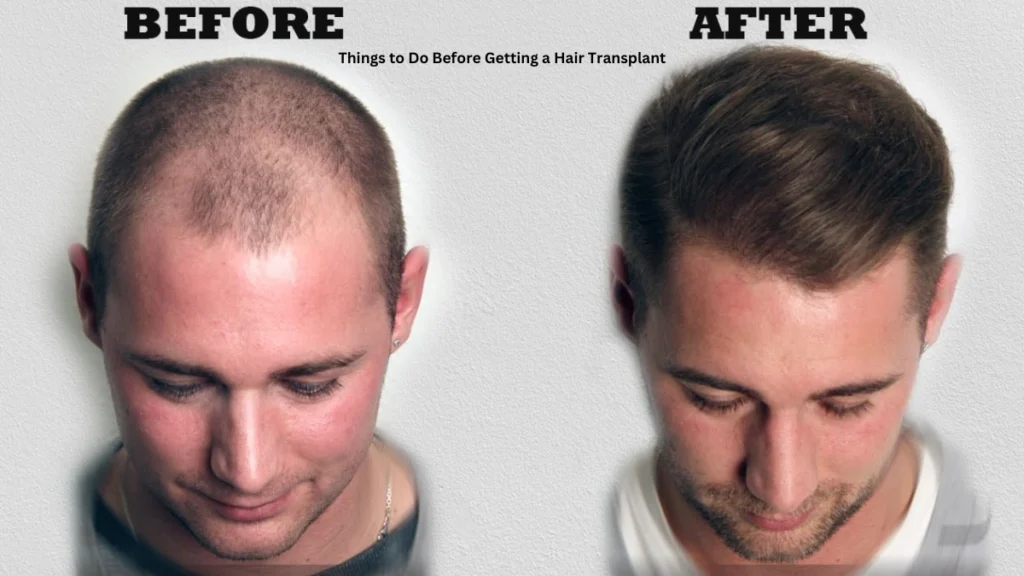
Proper scalp care can promote healing and support new hair growth. Follow these essential tips:
- Use a mild, sulfate-free shampoo to avoid irritation.
- Avoid scratching or rubbing the scalp.
- Pat dry with a soft towel instead of rubbing.
- Keep the scalp hydrated with doctor-recommended products.
- Protect from sun exposure by wearing a hat or using scalp-friendly sunscreen.
Read more: Things to Do Before Getting a Hair Transplant
Can Shedding Be Reduced?
While shedding is unavoidable, certain treatments can help minimize it:
- Platelet-Rich Plasma (PRP) Therapy: PRP injections can boost hair follicle recovery and reduce excessive shedding.
- Medications: Doctors may recommend Minoxidil or Finasteride to support new hair growth and reduce post-transplant shedding.
Common Myths & Misconceptions
Myth 1: Shedding Means the Transplant Failed
Fact: Shedding is a normal part of the hair transplant process, and new hair will grow back stronger.
Myth 2: Shedding is Permanent
Fact: The transplanted hair follicles remain intact, and shedding only affects the hair strands, not the roots.
FAQs
1. Is shedding normal after a hair transplant?
Yes, shedding is a normal part of the healing process. It’s known as shock loss and occurs because the transplanted hair follicles enter the resting phase before new hair growth begins.
2. When does shedding start after a hair transplant?
Shedding typically begins 2–4 weeks after the transplant procedure.
3. How long does the shedding phase last?
The shedding phase can last between 2–3 months, depending on individual healing and hair growth cycles.
4. Does shedding mean my hair transplant has failed?
No, shedding does not mean failure. The hair follicles remain intact, and new hair will begin to grow after the shedding phase.
5. When will new hair start growing after shedding?
New hair usually starts to grow within 4–12 months, with significant thickening by 12–18 months.
6. How can I care for my scalp during the shedding phase?
- Use a mild, sulfate-free shampoo.
- Avoid scratching or rubbing the scalp.
- Keep the scalp moisturized and protected from the sun.
- Follow doctor-recommended post-care instructions.
7. Can I reduce the shedding phase?
Some treatments can help minimize shedding, such as:
- Platelet-Rich Plasma (PRP) Therapy
- Medications like Minoxidil or Finasteride
8. Will all the transplanted hair shed?
Not all transplanted hair will shed, but it is common for a significant amount to fall out before new growth begins.
9. Can I speed up hair regrowth after shedding?
While there’s no way to completely speed up the process, proper scalp care, a healthy diet, and doctor-recommended treatments can support faster regrowth.
10. What if shedding continues beyond three months?
If shedding persists beyond the expected timeline, consult your hair transplant specialist to rule out any underlying issues.
Keratosis Pilaris Treatment: Best Ways to Get Smooth, Bump-Free Skin
Keratosis Pilaris Treatment: Keratosis Pilaris (KP) is a common but harmless skin condition that results in small, rough bumps on the skin, often resembling goosebumps or sandpaper. These bumps typically appear on the arms, thighs, cheeks, or buttocks. While KP is not painful or dangerous, many seek treatment to improve their skin’s appearance. This guide provides expert-backed, evidence-based treatments to help manage and reduce KP effectively.
Book Your Consultation Today
Visit Dr. Hanan Dermatology Specialty Clinic in Padur, OMR, Chennai. Schedule your consultation today and start your journey to fuller, healthier hair.
For more information and to book your appointment, visit our clinic or call us at the clinic’s contact details.
Understanding Keratosis Pilaris Treatment
What is Keratosis Pilaris?
KP occurs due to keratin buildup, which clogs hair follicles and creates small, rough bumps. It is a benign condition, but managing it requires proper skincare.
Causes of KP
- Excess keratin production
- Genetic predisposition
- Environmental triggers (cold weather, dry skin)
- Association with conditions like eczema and ichthyosis vulgaris
Who is at Risk?
- Children and teenagers (commonly seen during puberty)
- People with dry or sensitive skin
- Those with a family history of KP
Dermatologist-Approved Home Remedies
1. Exfoliation Techniques
Exfoliation helps remove dead skin cells and unclog pores.
- Physical Exfoliation: Use a soft loofah, dry brush, or a gentle scrub.
- Chemical Exfoliation: Choose AHAs (lactic acid, glycolic acid) or BHAs (salicylic acid) for effective exfoliation.
2. Moisturization
Hydrating the skin helps reduce KP’s rough texture.
- Best Dermatologist-Recommended Creams:
- Urea-based moisturizers (10-20% urea for softening skin)
- Ceramide creams to strengthen the skin barrier
- Lactic acid lotions to exfoliate and hydrate
- Natural Remedies: Coconut oil, aloe vera, and shea butter provide soothing hydration.
3. Skincare Routine Adjustments
- Avoid harsh soaps and long, hot showers that strip skin moisture.
- Use a humidifier during winter to prevent dryness.
- Consume omega-3-rich foods (salmon, flaxseeds) to support skin health.
Over-the-Counter (OTC) Keratosis Pilaris Treatment
If home remedies are not enough, consider OTC products:
- Keratolytic Creams: Containing salicylic acid, lactic acid, or urea to break down excess keratin.
- Retinoid Creams: Help increase cell turnover and smooth rough skin.
- Anti-Inflammatory Lotions: Reduce redness and irritation.
Dermatologist-Prescribed Treatments
For severe KP cases, dermatologists may recommend:
- Prescription Retinoids (Tretinoin, Adapalene) to enhance skin renewal.
- Laser Therapy to reduce redness and inflammation.
- Microdermabrasion & Chemical Peels to improve skin texture over time.
Debunking Myths About Keratosis Pilaris
1. Can KP Be Completely Cured?
No, but it can be effectively managed with proper skincare.
2. Does Diet Affect KP?
There is no direct scientific link, but maintaining a nutrient-rich diet supports skin health.
3. Will Scrubbing Too Hard Help?
No, over-exfoliation irritates the skin and worsens KP.
Long-Term Prevention & Skincare Routine
- Use gentle exfoliants (2-3 times a week).
- Moisturize daily, especially after showering.
- Wear breathable fabrics to minimize irritation.
- Follow dermatologist-recommended treatments if necessary.
FAQs
1. What is Keratosis Pilaris (KP)?
Keratosis Pilaris (KP) is a common, harmless skin condition that causes small, rough bumps, usually on the arms, thighs, cheeks, or buttocks. It occurs due to the buildup of keratin, which blocks hair follicles.
2. What causes Keratosis Pilaris?
KP is caused by excess keratin, a protein that protects the skin. This buildup clogs hair follicles, leading to rough, bumpy skin. It is often hereditary and linked to dry skin conditions like eczema.
3. Is Keratosis Pilaris curable?
There is no permanent cure for KP, but regular skincare can significantly improve its appearance.
4. How can I treat Keratosis Pilaris at home?
- Exfoliation: Use mild exfoliants with lactic acid, salicylic acid, or urea.
- Moisturization: Apply hydrating lotions with ceramides, urea, or alpha hydroxy acids.
- Gentle Cleansing: Avoid harsh soaps and hot showers, which can dry out the skin.
- Humidifiers: Using a humidifier can help keep the skin hydrated, especially in dry weather.
5. What are the best creams for Keratosis Pilaris?
Look for lotions or creams containing:
- Lactic acid (e.g., AmLactin)
- Salicylic acid (e.g., CeraVe SA Lotion)
- Urea (e.g., Eucerin Urea Repair)
- Retinoids (for stubborn cases, prescribed by a dermatologist)
6. Can diet affect Keratosis Pilaris?
A healthy diet rich in Omega-3 fatty acids (found in fish, nuts, and seeds) and vitamin A may help improve skin health, but there is no direct cure through diet alone.
7. Should I scrub the bumps off?
No, scrubbing aggressively can worsen the condition and lead to irritation. Use gentle exfoliation instead.
8. Does Keratosis Pilaris worsen in winter?
Yes, KP tends to worsen in colder months due to dry air, so extra hydration and gentle exfoliation are recommended.
9. Can laser treatments help?
Yes, laser therapy (such as fractional lasers) can reduce redness and improve skin texture in severe cases, but it may require multiple sessions.
10. Is Keratosis Pilaris contagious?
No, KP is not contagious. It is a genetic skin condition and cannot be spread from person to person.
Dull Skin Treatment: How to Restore Your Natural Glow
Dull skin is a common concern that makes the complexion appear tired, lifeless, and uneven. Factors like pollution, dehydration, poor diet, and improper skincare routines contribute to dullness. Fortunately, with the right treatments, lifestyle changes, and professional solutions, you can restore your skin’s natural glow and maintain a youthful, radiant complexion. In this guide, we explore the best dull skin treatments based on expert recommendations.
Book Your Consultation Today
Visit Dr. Hanan Dermatology Specialty Clinic in Padur, OMR, Chennai. Schedule your consultation today and start your journey to fuller, healthier hair.
For more information and to book your appointment, visit our clinic or call us at the clinic’s contact details.
Causes of Dull Skin
Understanding the root causes of dull skin is essential to finding the right treatment. Some of the most common reasons include:
- Dead Skin Cell Buildup: Without proper exfoliation, dead skin accumulates, leading to a rough and dull texture.
- Dehydration: Lack of hydration causes the skin to appear dry and lackluster.
- Sun Exposure: Prolonged UV exposure damages skin cells and accelerates aging, leading to dullness and pigmentation.
- Poor Diet and Lifestyle Choices: An unhealthy diet, smoking, and excessive alcohol intake deprive the skin of essential nutrients.
- Lack of Sleep and Stress: Sleep deprivation and high stress levels disrupt skin repair and regeneration.
- Environmental Pollutants: Pollution and dirt clog pores and reduce skin brightness.
Effective Home Remedies for Dull Skin

Making simple adjustments to your skincare routine and using natural ingredients can significantly improve skin radiance.
Exfoliation
- Exfoliating removes dead skin cells, allowing new and healthy skin to emerge.
- Use a natural scrub made from sugar, coconut oil, or honey.
- Exfoliate twice a week to maintain a fresh complexion.
Moisturization
- Keeping skin hydrated is key to maintaining a natural glow.
- Use a high-quality moisturizer daily to lock in hydration.
- Opt for natural oils like coconut oil or argan oil for deeper nourishment.
Sun Protection
- Sunscreen is essential to prevent UV damage and premature aging.
- Apply a broad-spectrum SPF 30+ sunscreen every day, even when indoors.
- Wear protective clothing and avoid direct sun exposure during peak hours.
Brightening Skincare Products
- Vitamin C Serums: Reduce dullness and promote an even skin tone.
- Niacinamide: Helps fade dark spots and improves skin texture.
- Hyaluronic Acid: Provides deep hydration, making skin look plump and radiant.
- AHA/BHA Products: Help exfoliate and remove dead skin layers effectively.
Lifestyle Changes for Glowing Skin
Healthy lifestyle choices play a crucial role in maintaining skin radiance.
- Stay Hydrated: Drink at least 8 glasses of water daily to keep skin hydrated from within.
- Eat a Balanced Diet: Consume antioxidant-rich foods like berries, nuts, leafy greens, and fatty fish.
- Get Enough Sleep: 7-9 hours of sleep promotes cell regeneration and a fresh complexion.
- Avoid Smoking and Alcohol: These habits deplete essential nutrients and damage skin health.
- Manage Stress: Practice meditation, yoga, or engage in relaxing activities to prevent stress-related breakouts and dullness.
Professional Treatments for Dull Skin
For those seeking advanced solutions, professional dermatological treatments offer effective results.
Chemical Peels
- Removes the outer layer of dead skin to reveal fresh, glowing skin underneath.
- Treats uneven texture, pigmentation, and mild acne scars.
- Available in different intensities (light, medium, and deep peels) based on skin concerns.
Laser Toning
- Uses laser technology to target pigmentation, sun damage, and dullness.
- Stimulates collagen production, improving skin texture and brightness.
- Safe and effective for various skin types.
Medical-Grade Serums
- Dermatologist-approved brightening serums improve skin tone and prevent sun damage.
- Often contain powerful ingredients like Vitamin C, retinol, and peptides.
- Work best when combined with a consistent skincare routine.
FAQs
1. What causes dull skin?
Dull skin can be caused by several factors, including:
- Dead skin cell buildup
- Dehydration
- Poor skincare routine
- Lack of sleep
- Pollution and environmental damage
- Unhealthy diet
- Stress
2. How can I make my skin glow naturally?
To achieve glowing skin naturally, follow these steps:
- Stay hydrated by drinking enough water.
- Follow a proper skincare routine with cleansing, exfoliation, and moisturizing.
- Eat antioxidant-rich foods like fruits and vegetables.
- Use sunscreen daily to protect against UV damage.
- Get enough sleep and manage stress.
3. What are the best treatments for dull skin?
Some effective treatments include:
- Exfoliation: Using scrubs, chemical exfoliants (AHAs/BHAs), or face masks.
- Facials: Hydrating and brightening facials like Vitamin C or oxygen facials.
- Chemical Peels: Helps remove dead skin and improve cell turnover.
- Laser Treatments: Stimulates collagen production for radiant skin.
- Hydration Therapy: Hyaluronic acid-based treatments to boost moisture.
4. Can home remedies help with dull skin?
Yes, home remedies like the following can help:
- Honey and lemon mask for brightening.
- Turmeric and yogurt pack for glow.
- Aloe vera gel for hydration and soothing.
- Coconut oil massage for nourishment.
5. How often should I exfoliate my skin?
Exfoliate 2-3 times a week for normal and oily skin, and 1-2 times a week for sensitive skin. Over-exfoliation can lead to irritation and damage.
6. Which ingredients should I look for in skincare products for dull skin?
Look for ingredients like:
- Vitamin C (Brightening & antioxidant)
- Hyaluronic Acid (Hydration)
- Niacinamide (Even skin tone)
- Glycolic/Lactic Acid (AHAs) (Exfoliation)
- Retinol (Cell turnover)
7. Can a bad diet cause dull skin?
Yes, a poor diet high in processed foods, sugar, and unhealthy fats can lead to dull skin. Eating a balanced diet with fruits, vegetables, and healthy fats helps maintain skin radiance.
8. How does sleep affect my skin’s glow?
Lack of sleep reduces blood circulation and collagen production, making the skin look tired and dull. Aim for 7-9 hours of quality sleep every night.
9. Does sunscreen help with dull skin?
Yes! Sun damage is a major cause of dull skin. Using broad-spectrum SPF 30+ daily prevents pigmentation, dryness, and premature aging.
10. When should I see a dermatologist for dull skin?
If your dull skin persists despite home remedies and skincare, consult a dermatologist for professional treatments like chemical peels, laser therapy, or prescription products.

